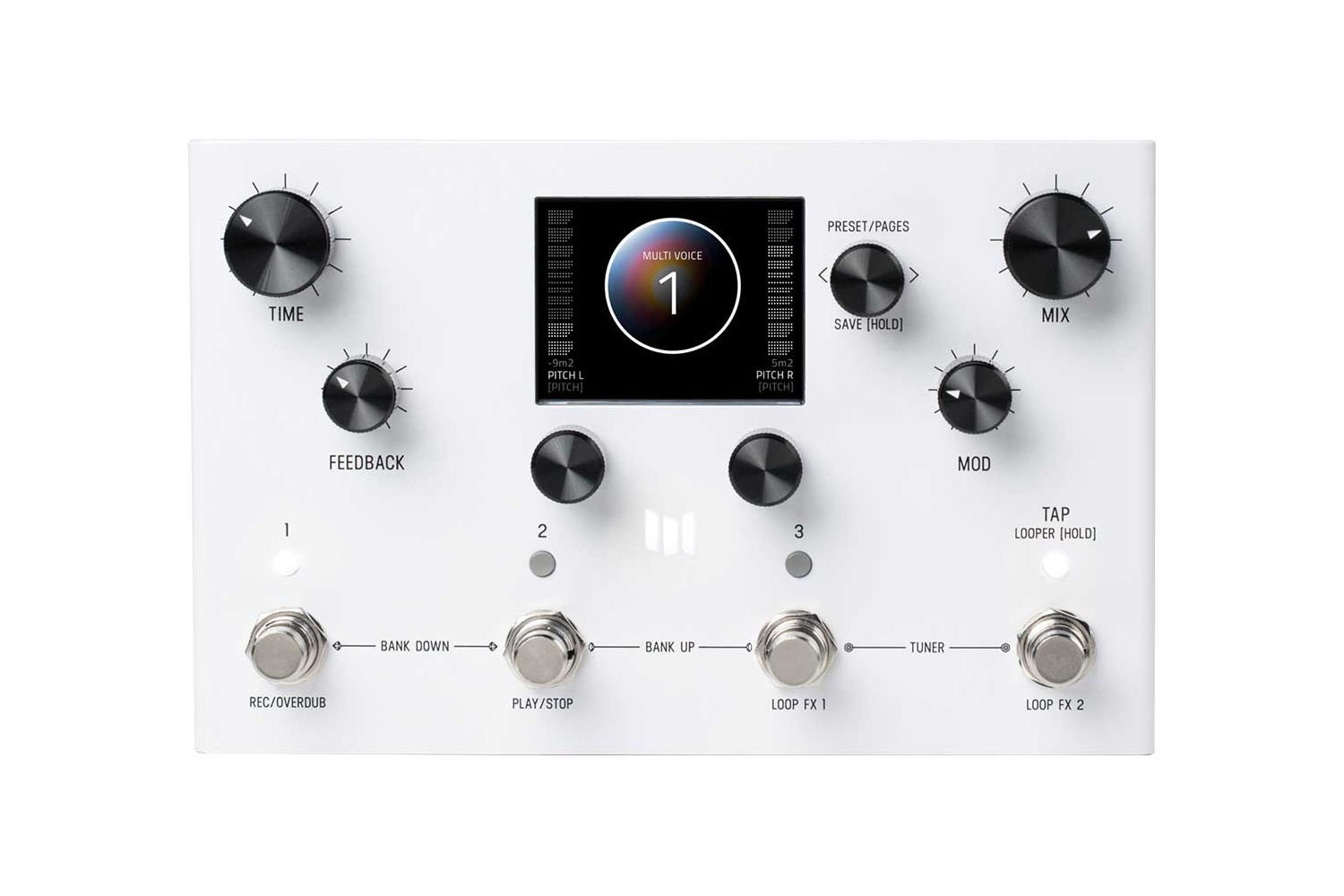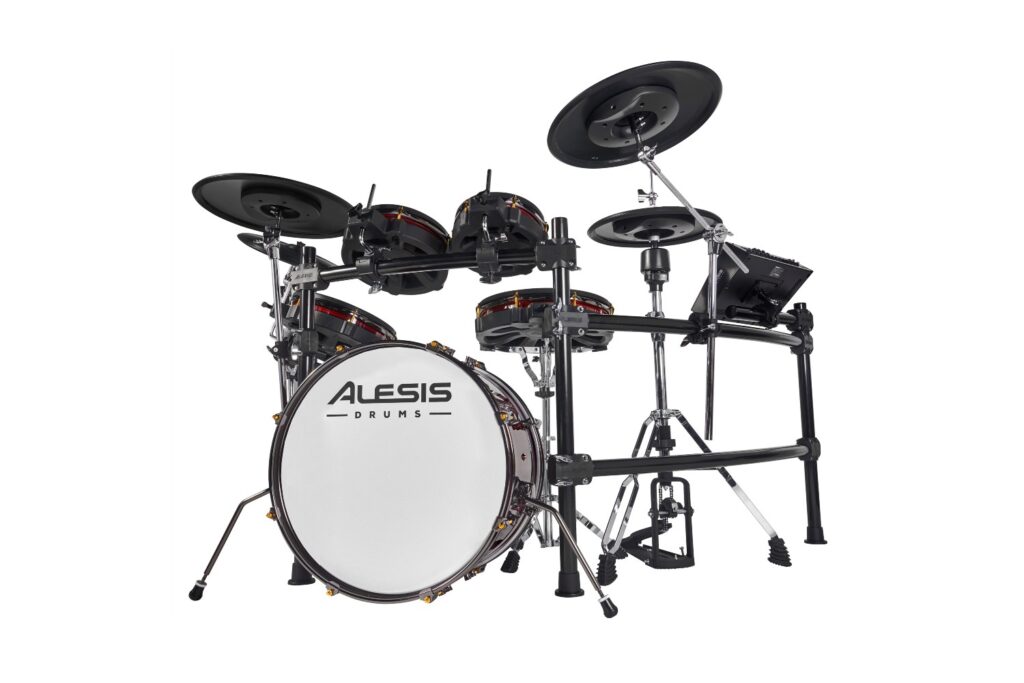Studio Connections | RRP: $989
We’ve discussed Meris before, with special focus on the LVX no less. Their rich history in not only product development, but forward-thinking designs from both an aesthetic and practical standpoint are difficult to beat.
Meris was founded by three uniquely skilled professionals: engineer Terry Burton of Strymon and Line 6 fame, designer Jinna Kim who’s done work for the likes of Disney, Sony, Lexus, and Cisco, and finally Angelo Mazzocco, a DSP engineer who’s created unique instruments and DSP code for some of the biggest names in rock.
These three unique areas of expertise, from product design and coding, to broader areas of multimedia design and finally, musician-focused-coding, feel like they crescendo in the Meris LVX.
Read more gear reviews here.
The LVX features a staggering level of detail that would feel overwhelming if it weren’t for the player-focused layout and controls. At surface level, the Meris LVX is a delay pedal, but it’s unlike any delay you’ve played before.
Meris’ LVX is, ultimately, a modular delay pedal. What this means is, it has a heap of functions to customise a delay sound, and all of these are customisable themselves, with options far beyond just the order of your signal chain – which is a massively powerful tool in and of itself!
Little functions like inserting EQs before or after different stages such as gain and modulation can have a massive effect on your delay sound, which of course can be blended in and out as we see fit via the big mix knob. Front and centre on the LVX are the main controls: time, feedback, mod(ulation), and mix. All of these are fairly standard fare for a delay and will feel familiar to most players. Where the LVX falls into its own is in the four programmable switches which can be used to toggle on and off effects and parameters, recall presets, tap the tempo out, or jump into looper mode.
In addition to this, there’s the C1, C2, and C3 controls, and their use varies depending how deep into editing you are. All of this surrounds the colour screen (which is also customisable) that displays the edit menus and current settings. The LVX takes either guitar or line level signal, adjustable by a little pot on the back panel. The back panel is also home to stereo ¼” inputs and outputs, as well as expression pedal input and five-pin MIDI in and out. USB-C is used to connect the LVX to your computer for firmware updates, and it’s all powered by a standard 9V DC adapter.
In use, the LVX really shines and you can see why it’s taken years of work from Meris to complete. You’re able to quickly find some great-sounding presets, but what makes the LVX unique is the ability to really hone in on those sounds more than ever before. The LVX harnesses everything you didn’t realise you were missing, and allows us to create finished, studio recording quality delays from our pedal board. While all based around three main types of delay, digital, bucket brigade delay (BBD), and tape, the hyper focused editing allows you to push or pull as much as you’d like out of each sound. The time, feedback, mod, and mix knobs had me dialling a familiar-sounding delay in moments, and the C1, C2, and C3 knobs really made it shine.
In the default setting, the C1 pot allows you to toggle through ‘structures’ such as multi-tap, poly (based on Meris’ Polymoon pedal). The multi-tap structure allows for less quantised-sounding delays, a little triplet flutter, or anything else your creative brain may be begging for. The poly mode creates a unique stereo delay, as does the multi-filter and reverse settings to name a few more options. A quick look through the LVX manual shows that while there are standard steps in the delay signal chain, the LVX also has a few empty blocks for your own settings, insertable at different stages. Customisable options include things like note division for each channel, cross-talk, feedback, gain, and modulation. While all this is well and good for goofing around at home or concocting fresh sounds, the LVX’s expression pedal input can control up to six parameters simultaneously and can be individually set to preset, so it’ll have you sorted to harness the full capability in a live setting as well.
It’s difficult to categorise the LVX. While it’s not just a pedal, it’s also not even just a delay pedal. It’s a multi effects unit with a focus on delay sounds, but with inserts available along the way, and familiar sounds to either replicate classic magnetic tape tones or to shape entirely new ping pong, slapbacks, and shimmers.
While the manual seems like a lot to take in, jumping in to the well-laid-out controls makes it all feel a bit clearer, with the classics like time, mix, and mod complemented by the function controls that vary depending on how deep into the wormhole that is the LVX menus you’re willing to go. Only a company like Meris, with its unique founders, could create a product like the LVX, a delay pedal power house that’s solving every delay issue you’ve ever had while allowing you to push your tone into new and uncharted territory.
Head to Meris for more information. For local enquiries, reach out to Studio Connections.







